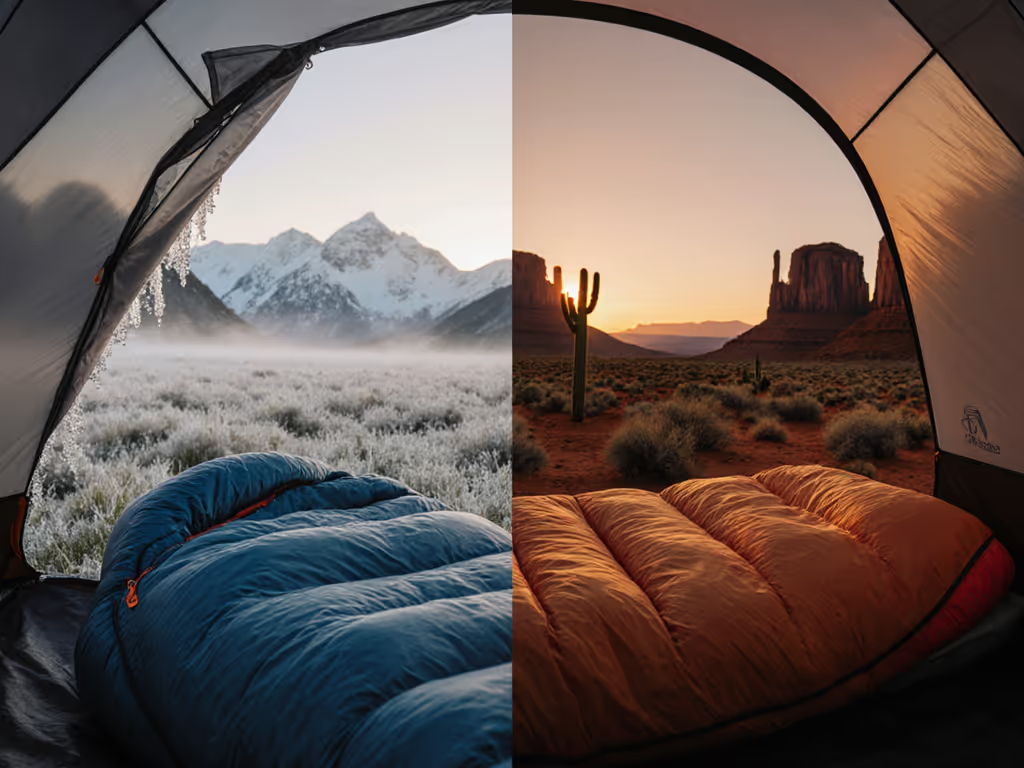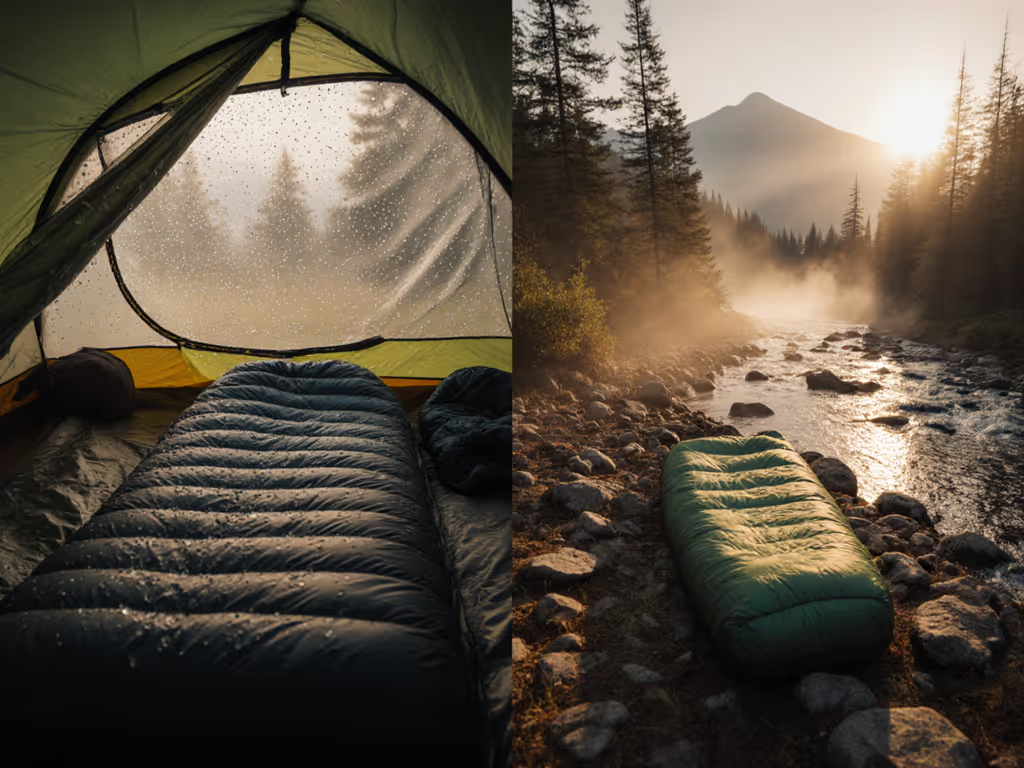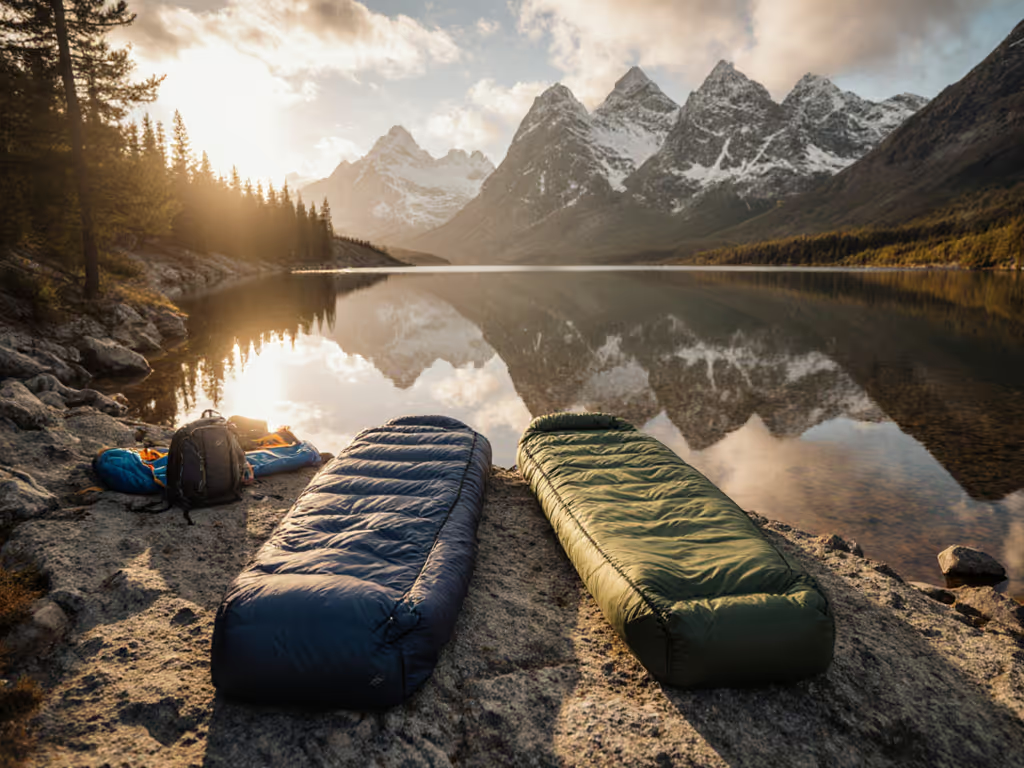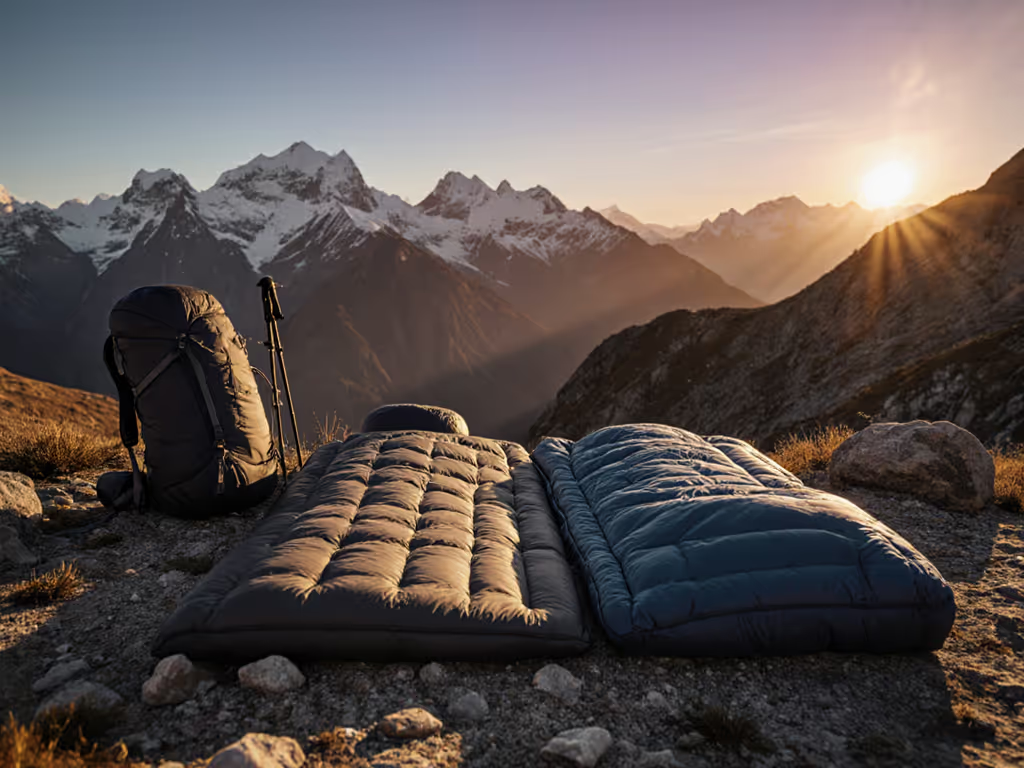
AT vs PCT Thru-Hiking Bags: Trail-Specific Warmth Decoded
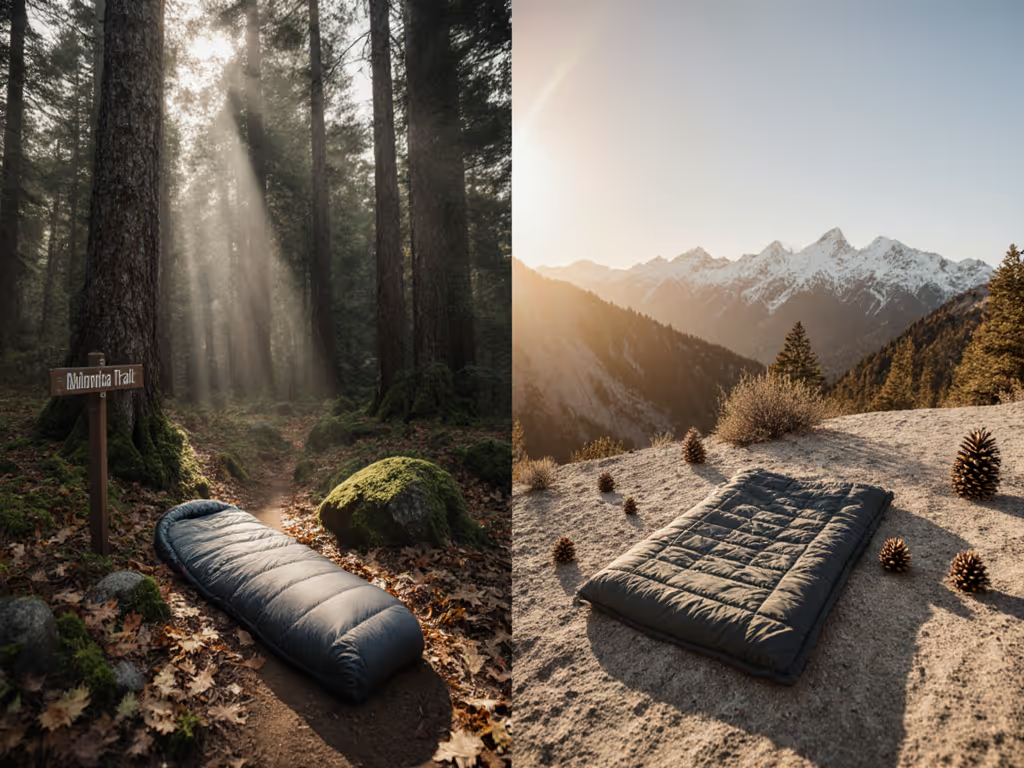
Let's cut through the marketing noise: your [20°F] Appalachian Trail sleeping bags won't magically keep you warm on the PCT's wind-scoured ridges. Western Mountaineering sleeping bags, renowned for their precision engineering, excel on one trail but may disappoint on the other without critical system adjustments. Warmth is a system, not a single-spec promise. I learned this the hard way on a windy bivy where my ISO-rated gear failed despite "perfect" temperature specs. This comparative analysis cuts through the hype with pad-first logic, wind compensation, and explicit safety margins your shelter and sleep position demand.
Why Temperature Ratings Lie (And How to Fix Them)
The fatal flaw in most AT vs PCT gear comparisons? They treat sleeping bags as standalone products. In reality, warmth depends on five interconnected factors:
- Pad R-value (your primary warmth source on cold ground)
- Wind exposure (a 10mph breeze steals warmth equivalent to 10°F temperature drop)
- Shelter type (single-wall tents vs double-wall, mesh vs solid panels)
- Sleep position (side sleepers compress insulation by 30-50%)
- Caloric intake (under 1,800 daily calories? Add 5°F to your comfort margin)
The sleeping bag's EN comfort rating assumed R2.5 pad and no wind. With a minimal R1.0 pad and 20mph gusts, I needed 15°F of additional warmth, delivered by my puffy jacket and strategic shelter placement.
Pad-first logic reveals why many hikers get cold despite "correct" bag ratings:
- Ground contact steals 5x more heat than air
- Each 1.0 R-value increase = +5°F effective warmth
- Wind exposure requires 1°F margin per 5mph sustained wind
Appalachian Trail: Humidity Wars and Moisture Management
Humid eastern forests create unique thermal challenges invisible to temperature ratings alone. For humidity-specific performance data, see our down vs synthetic in humid conditions field test. The AT's consistent tree cover reduces wind exposure but dramatically increases moisture risks:
- Humidity above 70% cuts down insulation's effective warmth by 15-25%
- Daily rain cycles wet sleeping bags faster than desert trails
- Consistent 40-60°F nights create perfect conditions for condensation buildup
Critical AT Adjustments
| Factor | Standard Assumption | AT Reality | Required Margin |
|---|---|---|---|
| Wind exposure | Low (forested) | Moderate (ridge lines) | +3°F |
| Moisture effect | 0% | 20% warmth loss | +5°F |
| Pad necessity | R2.5 | R3.5+ recommended | 1.0 R-value bump |
| Humidity swing | None | 40-90% daily | Vapor barrier liner |
The best 20°F sleeping bags for the AT often need 25°F+ effective warmth when accounting for moisture. This explains why thru-hikers swear by "overbuilt" bags despite supposedly mild conditions. For sheltered, humid camps:
- Hydrophobic down (like DriDown) maintains 50%+ more loft when damp
- R4.0+ pad essential for consistent 35°F comfort
- Full-length zipper critical for venting without creating drafts
- Vapor barrier liner adds 5-7°F effective warmth by blocking moisture transfer
Pacific Crest Trail: Wind, Aridity, and Wild Swings
The PCT's defining challenge isn't cold, it's thermal volatility. Southern California deserts hit 100°F days but 35°F nights. The Sierra Nevada brings snow at 10,000 feet in July. Northern Cascades deliver soaking rain at 5,000 feet. Wind exposure becomes the dominant factor:
- Above-tree-line camps experience 15+ mph average winds
- Dry air (20-40% humidity) preserves down's full warmth potential
- 50°F+ daily temperature swings demand versatile layering
Critical PCT Adjustments
| Factor | Standard Assumption | PCT Reality | Required Margin |
|---|---|---|---|
| Wind exposure | Moderate | Severe (ridge lines) | +8°F |
| Moisture effect | 0% | Minimal (dry air) | 0-2°F |
| Pad necessity | R2.5 | R3.0+ essential | 0.5-1.0 R-value bump |
| Thermal swing | 20°F | 50°F+ | Adjustable vents |
The PCT's dry air actually improves down performance, but wind exposure can negate those gains instantly. On a July Sierra Nevada snowstorm, my "overkill" 10°F bag with R4.5 pad kept me comfortable at 28°F with wind speeds of 25mph because the system was designed for exposure, not just temperature.
Head-to-Head: Bag Design Imperatives

OneTigris Featherlite Ultralight Sleeping Quilt
AT-Specific Requirements
- Full-length draft tubes (Eastern humidity creates more condensation)
- Wider cut (forest camps allow larger shelters; side sleepers need space)
- Hydrophobic treatment (non-negotiable for constant moisture)
- Minimal overstuffing (humidity compresses insulation faster)
PCT-Specific Requirements
- Wind-blocking collar (critical for exposed bivies)
- Tighter fit (reduces air volume to heat in lighter shelters)
- Strategic venting (essential for 70°F→40°F daily swings)
- Integrated pad straps (prevents shifting in windy conditions)
Quilt Considerations
Despite popularity among weight-weary thru-hikers, quilts require careful matching to trail conditions:
- AT: Only viable above 50°F with double-wall tent (avoid condensation issues)
- PCT: Better option below 40°F due to dry air (less moisture risk)
The quilt worked perfectly with R4.5 pad and windbreak, but I needed supplemental puffy jacket when winds exceeded 20mph. Quilts demand more wind management skills than mummy bags. If you're deciding between the two, start with our sleeping bags vs quilts guide.
Targeted Solutions: Matching Systems to Your Sleep Profile
Don't ask "What's the best bag?" Ask "What's the best system for my specific conditions?" Consider these scenarios:
For cold sleeper on AT with single-wall shelter
- Target sleeping bag: 15°F mummy with hydrophobic down
- Pad: R4.5+ (critical for moisture-buffered warmth)
- Wind management: Shelter placement behind natural barriers
- Margin: +7°F (for humidity + wind exposure)
- Calorie buffer: Evening hot drink + 200 calorie snack
For warm sleeper on PCT with frequent ridge camps
- Target sleeping bag: 25°F quilt with adjustable footbox
- Pad: R3.5 (wind protection more critical than extreme cold)
- Wind management: Strategic bivy tarp placement + shelter door closure
- Margin: +5°F (primarily for wind exposure)
- Calorie buffer: Minimal (dry air requires less fuel for warmth)
Budget-conscious hiker needing versatility
The OneTigris Featherlite offers surprising value for 40°F+ conditions but requires hydrophobic spray for AT moisture. Its hollowed back design works well with pads but lacks wind-blocking features for exposed PCT camps.
Here's the System I'd Actually Take
For a mixed-condition thru-hike covering both trails' challenges, I integrate these components with explicit safety margins:
- Bag: Western Mountaineering Versalite 10°F (850 fill, 32 oz), overbuilt for most conditions but critical for PCT alpine zones
- Pad: Therm-a-Rest NeoAir XTherm (R5.3), non-negotiable for wind-exposed camps
- Wind management: 6x6 ft cuben fiber tarp + stuff sack windbreak
- Calorie buffer: 200g extra fat intake (nuts, cheese, olive oil)
- Safety margin: 10°F beyond expected lows (5°F for wind + 5°F for error margin)
This system costs more upfront, but it eliminates sleepless nights during unexpected cold snaps. The Western Mountaineering sleeping bags' precise construction pays dividends when wind exposure threatens your warmth.
Final Verdict: Match Your System to the Trail's True Challenges
Stop comparing temperature ratings alone. The real difference between Appalachian Trail sleeping bags and PCT setups comes down to moisture versus wind management:
- Choose AT-specific bags when: Humidity consistently exceeds 60%, tree cover limits wind exposure, and shelter space allows larger systems
- Choose PCT-specific bags when: Wind exposure exceeds 10mph regularly, humidity stays below 50%, and daily temperature swings exceed 30°F
The most critical upgrade isn't your bag, it's your pad's R-value. Adding 1.5 R-value to your pad provides more warmth than stepping down 10°F in bag rating, at half the weight penalty. For thru-hikers balancing weight and safety, prioritize:
- Pad R-value appropriate for worst-case wind exposure
- Bag construction matching trail-specific moisture levels
- Explicit 5-10°F warmth margin based on your sleep physiology
Warmth isn't purchased in a bag, it's earned through system integration. Your next summit bivy should deliver quiet, dreamless sleep, not shivering calculations at 2AM. Build for the conditions you'll face, not the temperature rating on the tag.

